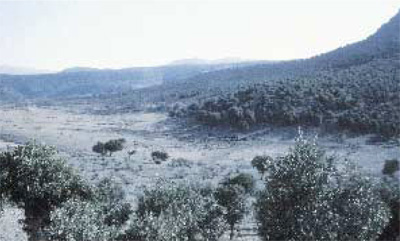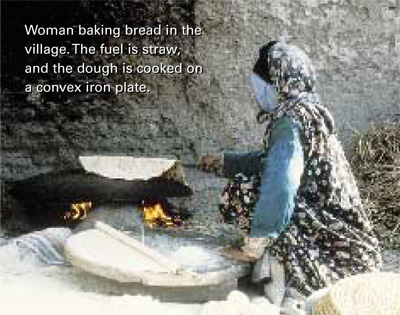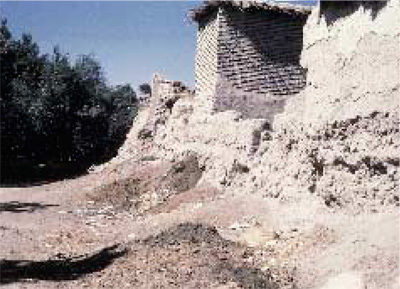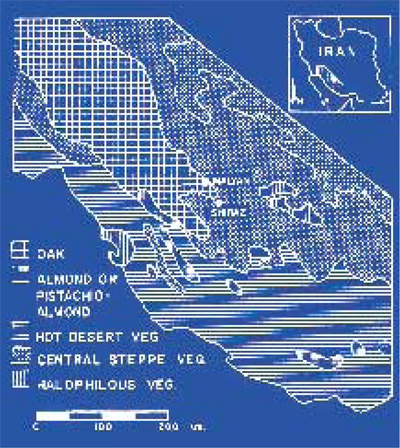
When I was in Southern Iran in the 1970s, I collected charred woods and seed plant remains from the ancient city of Anshan, today’s Malyan. Although charcoal was plentiful, there were not many compared with other sites in the Near East. But as with those other sites, the seeds I did find included a high proportion of wild and weedy types. Yet Malyan was the capital of an ancient agricultural civilization, where wheat and barley had been cultivated for thousands of years. Why were there so many seeds of wild, nonfood plants? Even the cultigens were hard to explain.
Although both wheat and barley are edible, people usually prefer wheat because it is easier to husk. Barley is more likely to be fed to animals (or made into beer). So why were there many more barley seeds than wheat? And why was the proportion of charred seeds relative to charred wood greater at 2000 B.C. than at 3000 B.C.?
Between 3000 and 2000 B.C., Malyan tripled in size, to about 150 hectares. The settlement survey by William M. Sumner suggests that population density in the entire region also rose. Starting with the trees closest to home, one might expect some were cut for field clearance and for fuel. Indeed, a shift in the proportion of charred wood types suggests that trees closest to Malyan were selectively removed. The main fuel woods at 3000 B.C. were pistachio, almond, maple, juniper, and poplar. Pistachio and almond (with edible nuts) persist in the charcoal assemblage, but by 2000 B.C., oak and maple had replaced juniper and poplar. Alternatively, the changes may simply reflect the post-Pleistocene expansion of the oak forest after about 10,000 years ago.


I had assumed that the wood remains were from spent fuel. But how did the seeds wind up in the fire? In the 1970s, archaeobotanists commonly believed that cultigens were food remains, but that wild seeds fell into fires accidentally and were thus preserved in the archaeological record. So I turned my attention to the seeds.
It is always risky to directly compare modern villages with ancient cities, but there are enough continuities in material culture to make worthwhile comparisons with modern communities reliant on traditional technologies. When I was in the village of Malyan, I began to observe how plants were incorporated into what would become the archaeological record — how they got charred and disposed of — in a community without electricity, running water, or gas lines. Villagers used kerosene, wood, dung, and straw as fuel, the last three of which would have been relevant in antiquity. Several of the archaeological deposits had a fibrous ashy material that looked like burned dung remnants, and I began to wonder if burned dung could have seeds in it. Just outside the modern village wall, the residents dumped their courtyard and hearth sweepings separately. One day, I surreptitiously scooped up a couple of samples to ship home. Back in the United States, I checked, and sure enough, hearth samples had not only burned seeds and dung, but sometimes, the seeds were embedded in dung fragments.
This discovery explained some puzzles:
There were few seeds relative to charcoal because Malyan lies in the forest zone; there were still plenty of trees, so dung was a minor fuel.
The seed assemblage reflects animal, rather than human, diet, which is why there were many seeds of wild plants, and why barley outnumbered wheat by about 13 to 1. (Interestingly, a single cess deposit had reverse proportions of 2 wheat to 1 barley. See sidebar.)
The increase in the proportion of seeds to charcoal reflects increasing use of dung fuel as trees were cut down for farmland and fuel.
A Curious Archaeological Deposit
 One of the most intriguing samples I have ever encountered came from a deep, straight-sided pit (about 1 meter in diameter). The greenish deposit was chock full of rodent skeletons, uncharred seeds (mainly grape) and small, smooth, new potato–size stones. The explanation? A visiting archaeologist pointed out it was an ancient privy. The form speaks for itself, and the greenish color is a tip-off that it could be a cess deposit. As for the rodent skeletons, imagine the La Brea Tar Pits — an animal falls in, drowns, and its corpse stays intact until decay sets in. The seeds? In one end, out the other. Particularly gratifying, then, was the discovery that most of the grain was wheat. Namely, animals ate more barley, which found its way into the charred assemblage, and people ate more wheat, direct evidence for which lay in the proportions of the incompletely digested grains. And those smooth rocks? The archaeological visitor suggested that they functioned as toilet paper!
One of the most intriguing samples I have ever encountered came from a deep, straight-sided pit (about 1 meter in diameter). The greenish deposit was chock full of rodent skeletons, uncharred seeds (mainly grape) and small, smooth, new potato–size stones. The explanation? A visiting archaeologist pointed out it was an ancient privy. The form speaks for itself, and the greenish color is a tip-off that it could be a cess deposit. As for the rodent skeletons, imagine the La Brea Tar Pits — an animal falls in, drowns, and its corpse stays intact until decay sets in. The seeds? In one end, out the other. Particularly gratifying, then, was the discovery that most of the grain was wheat. Namely, animals ate more barley, which found its way into the charred assemblage, and people ate more wheat, direct evidence for which lay in the proportions of the incompletely digested grains. And those smooth rocks? The archaeological visitor suggested that they functioned as toilet paper!
